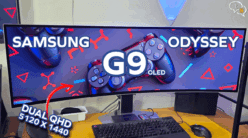Today i’m unboxing the Nikon Z6, a mirrorless camera which is the so-called budget sibling of the Z7.
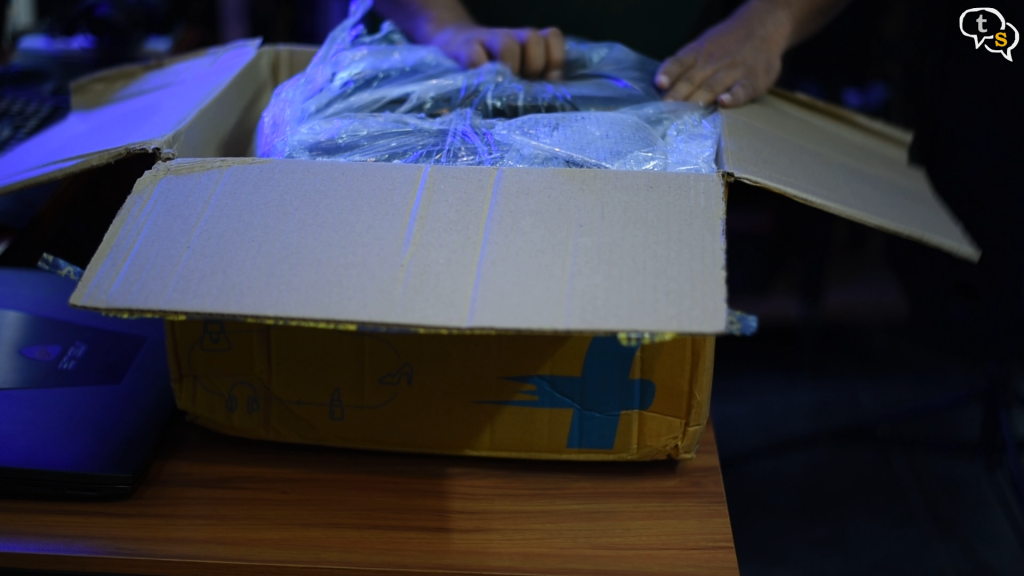
The Z6 and Z7 are Nikons foray into the mirrorless camera space which were ruled by both Sony and Canon until now.
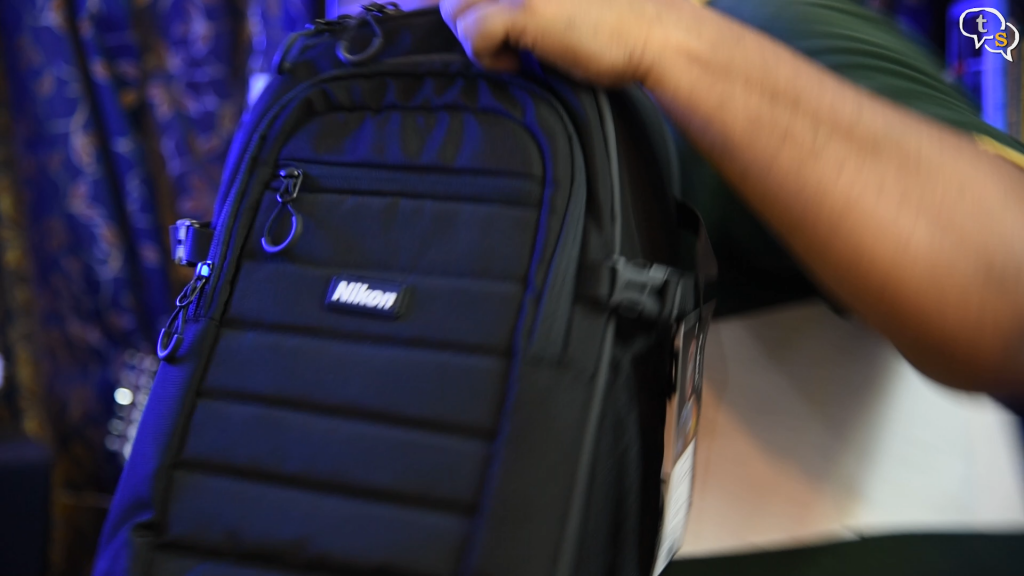
The first item in the big box is the Nikon camera Backpack, looks really nice, let’s keep it to the side for now.
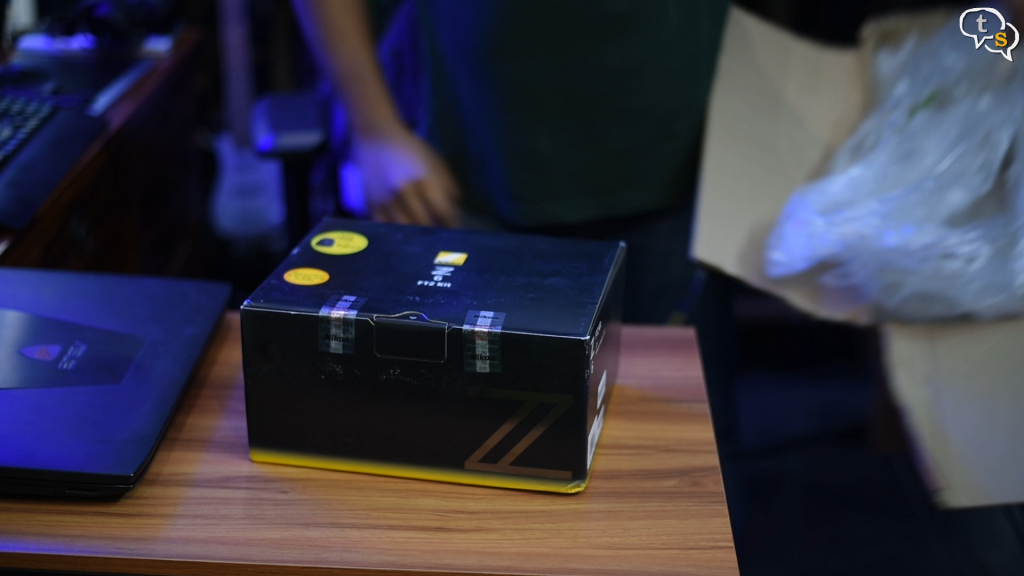
Next we have a big nikon Z6 box, We can see a 32 Gb XQD memory card taped to the side.
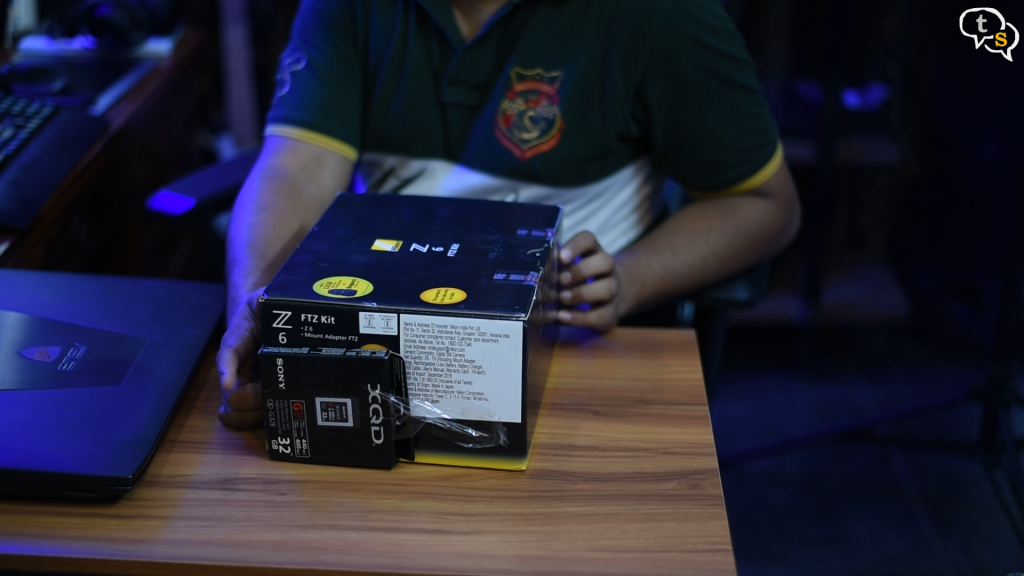
The nikon z6 uses XQD memory cards, so at least im happy they included one in the kit, being a new standard, these cards cost quite a bit. Lets peel that away and place it on the side.
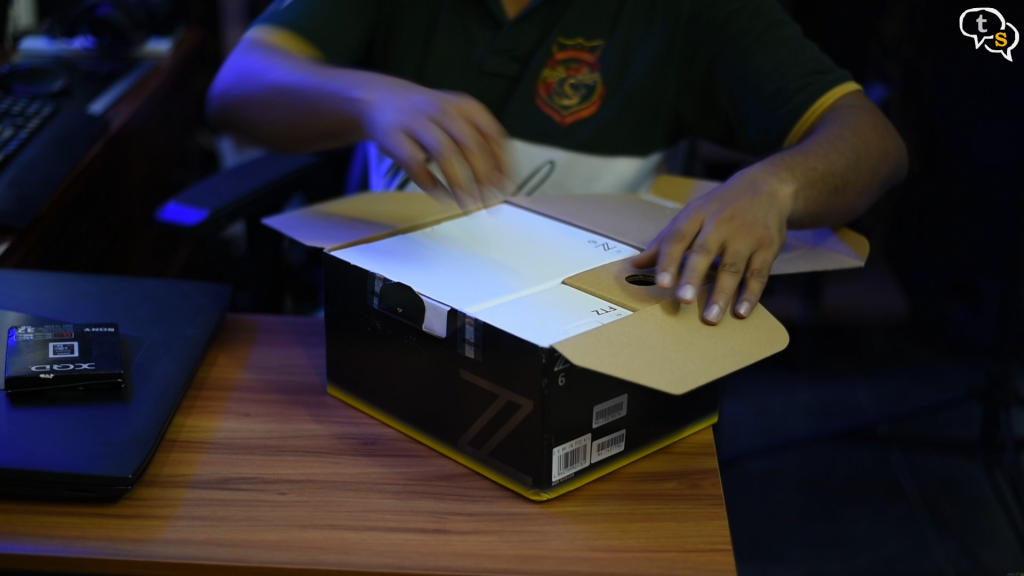
Cutting through the seals on the box we have inside are two more boxes.
This one is a spacer to keep the items inside safe.
Box one is the FTZ adapter which can be used to attach older (mind you not very old) lenses to the camera.
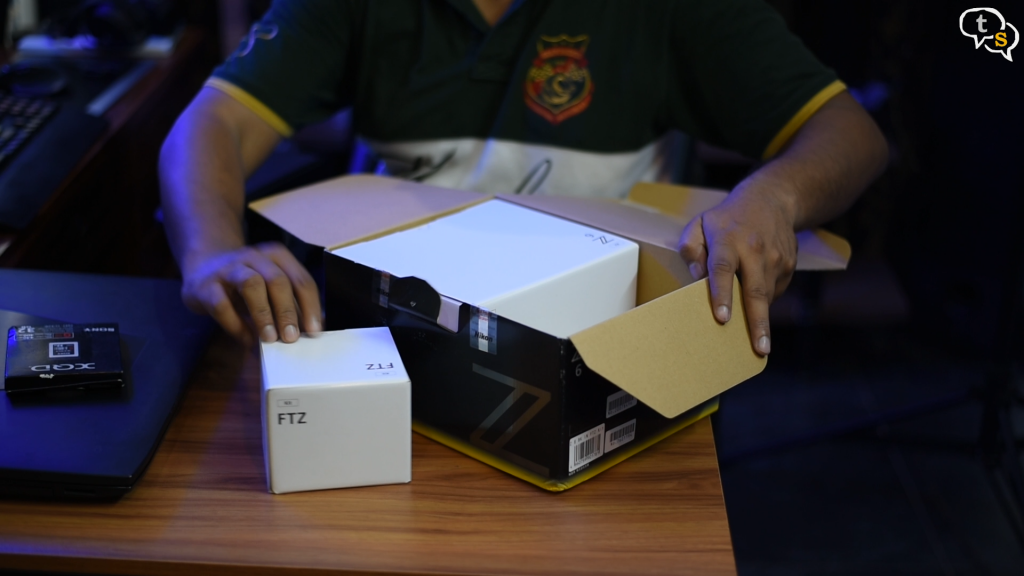
Nice that I managed to get it as part of a kit, as I’ve heard the price of this adapter, because it’s not easily available in India is around Rs 26,500 and around $250 in the US.
Being part of the kit, it came FREE.
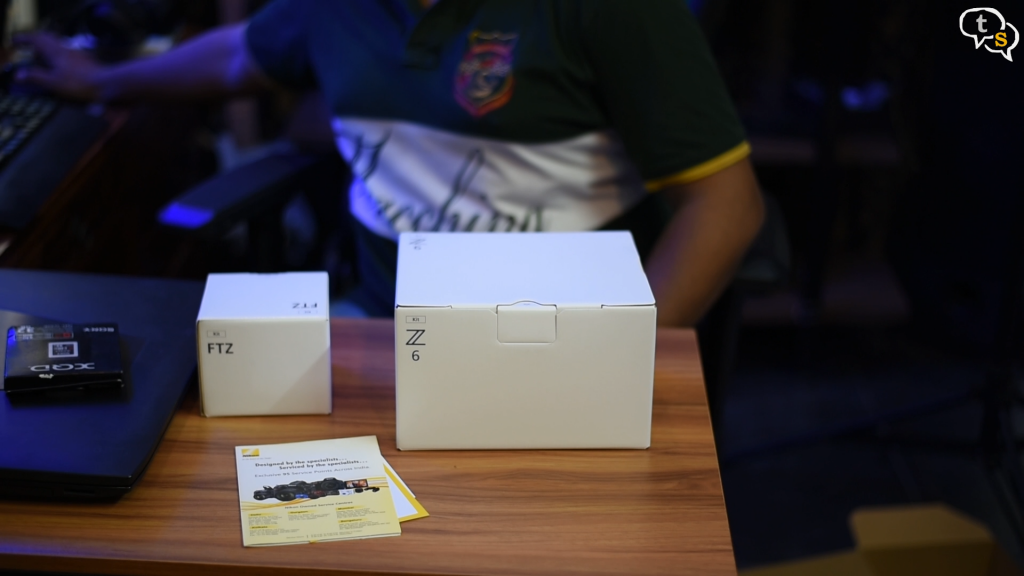
Now let’s look at what else is in there, ok, we have warranty cards, and a white box with Nikon Z6 marked on it. This contains the camera.
I managed to snag myself a kit which has the camera, the FTZ adapter, a 32 GB memory card and a Nikon camera backpack but no lens as I want to use my older lenses for now.
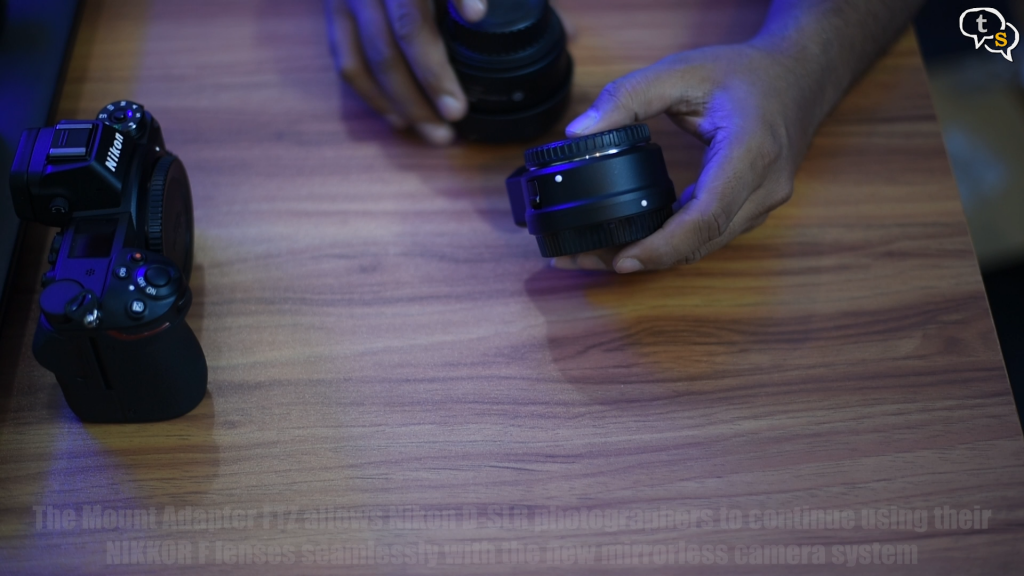
Let’s check out the FTZ adapter first. Basically, it’s an adapter which converts older F mount lenses to the newer Z mount. Nothing else seems to be in there.
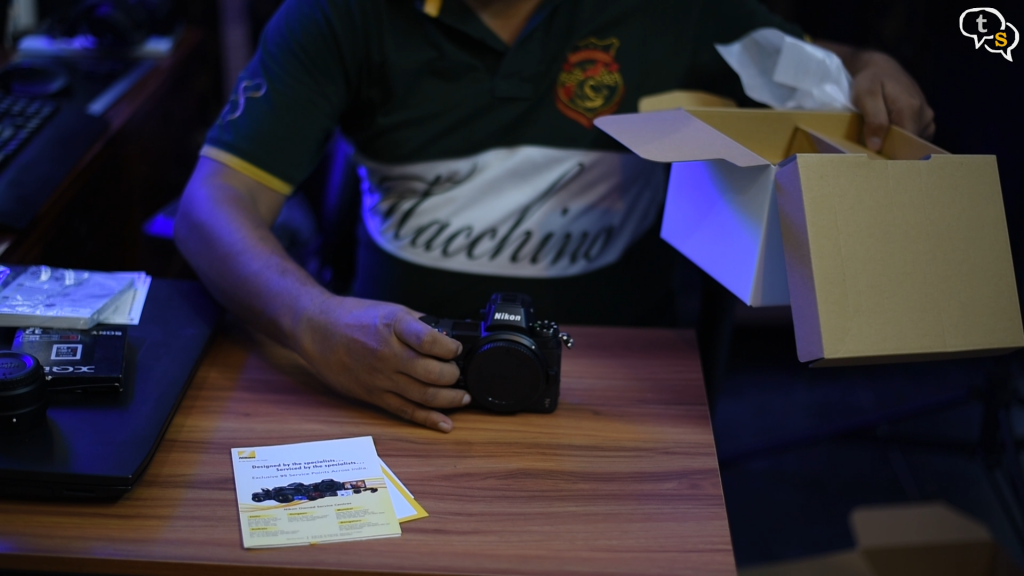
Here’s the camera, wow, being used to DSLR’s, this mirrorless camera feels quite light.

The charger included is the MH-25a which is the same as the one that came with my Nikon D750.
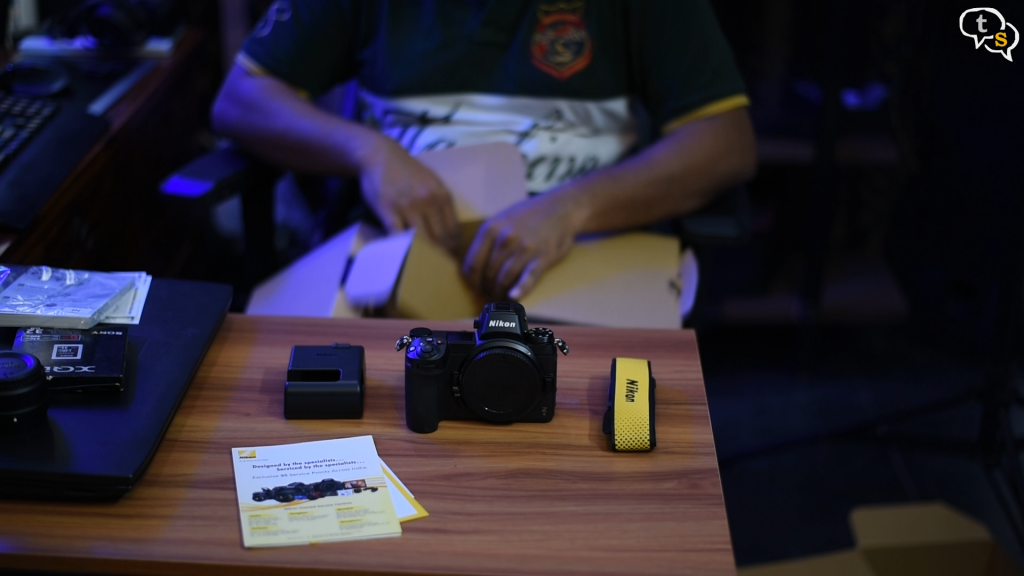
We have a strap with Nikon branding and Z marked on it.
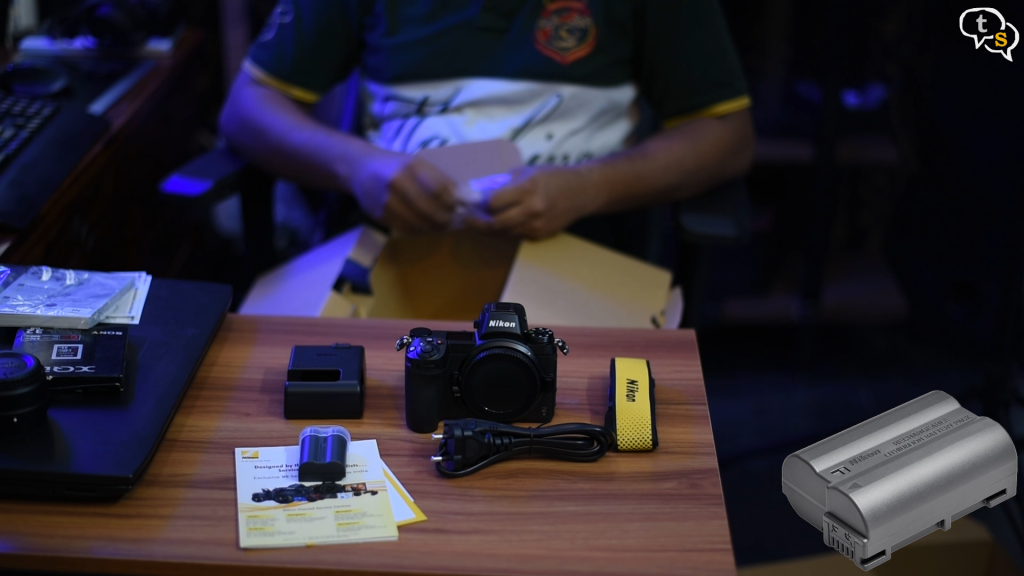
The EN-EL15b Rechargeable Battery, which is the newer model, the d750 uses the EN-EL15 model, glad to know that my older batteries will also work with this camera.
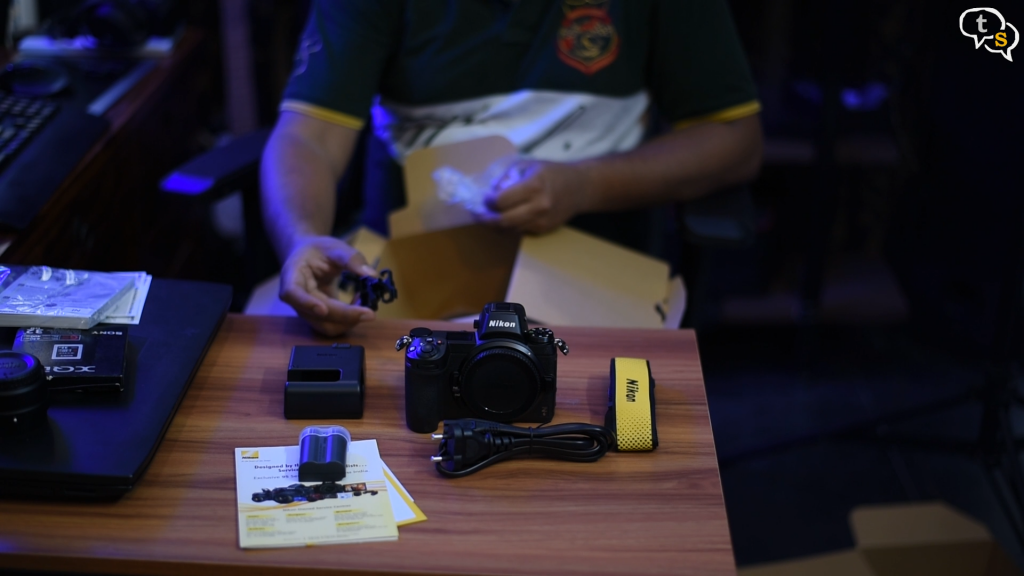
A bracket to support the strain on the HDMI and usb ports.
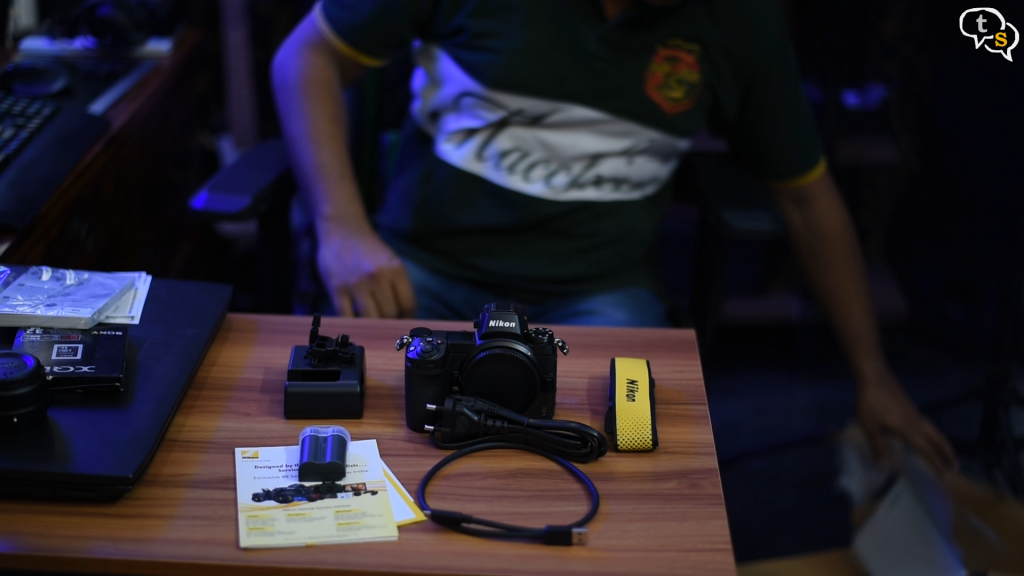
Usb-A to USB-c cable
That looks like everything.
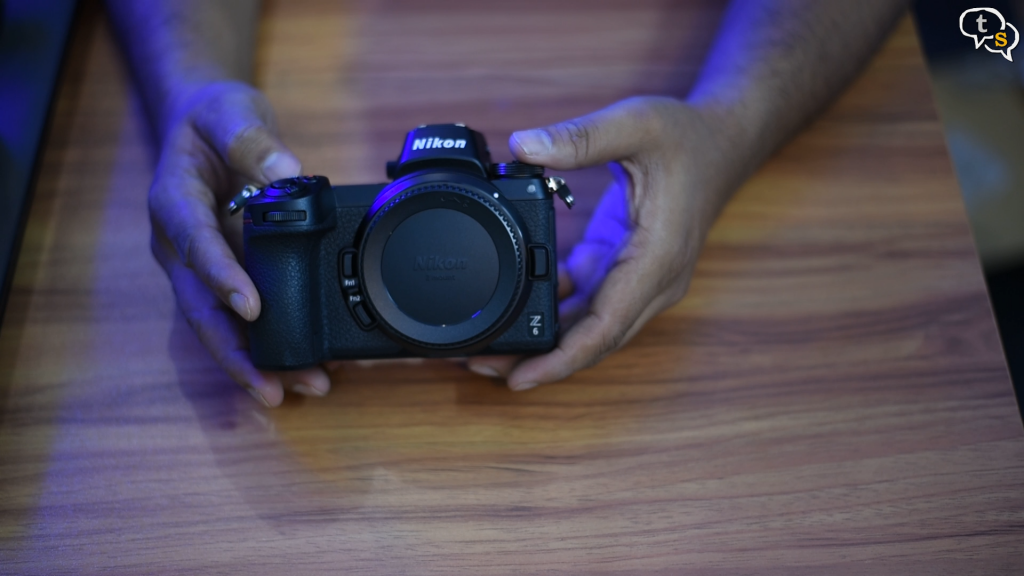
Here’s the camera, it looks quite similar to its bigger brother the Z7. The Z6 has a 24.5 mp BSI-CMOS sensor as compared to the 45 megapixel sensor on the Z7.
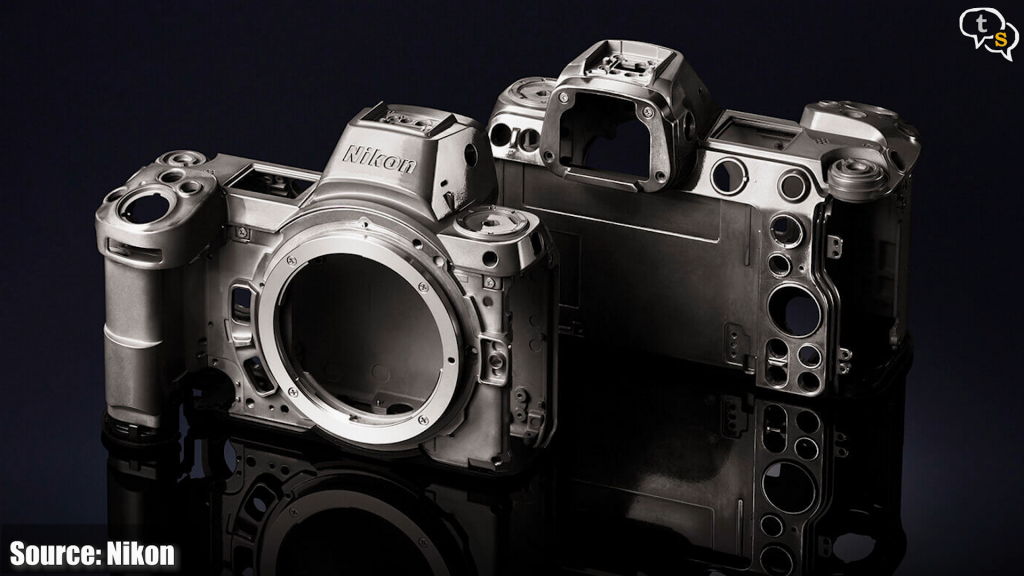
The body is made of a magnesium alloy and has extensive weather sealing.
You would almost mistake it for a Z7 if it were not for the Z6 badge on the front.
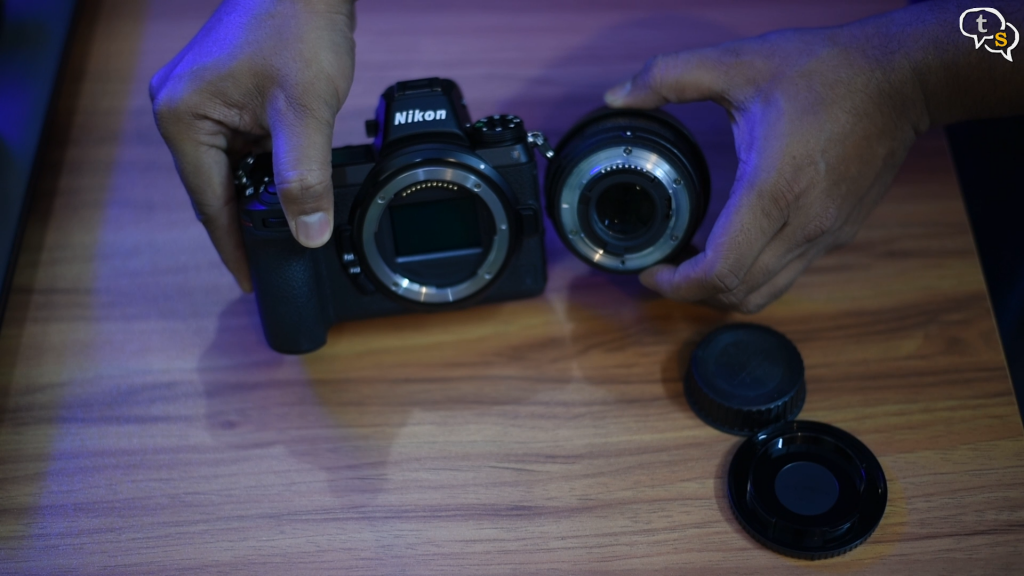
On the front is the Z mount which is 55 mm in diameter as compared to 44 on the f mount.
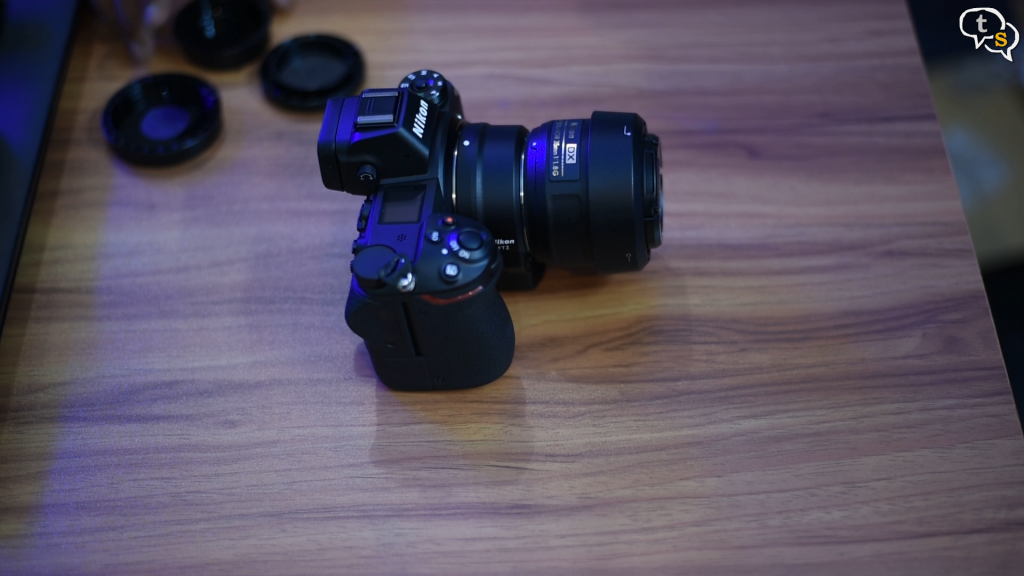
Let’s get a lens onto the camera, using the FTZ adapter I’m using one of my older lenses.
Yes, I know I’m using a DX lens for now, I have my FX 50 mm on my D750 which is currently shooting this video.
The adapter is quite simple to use, mount the F lens on the F side and the other side slots into the camera itself.
We will need a battery to run the camera, so let’s use the one that came in the box.
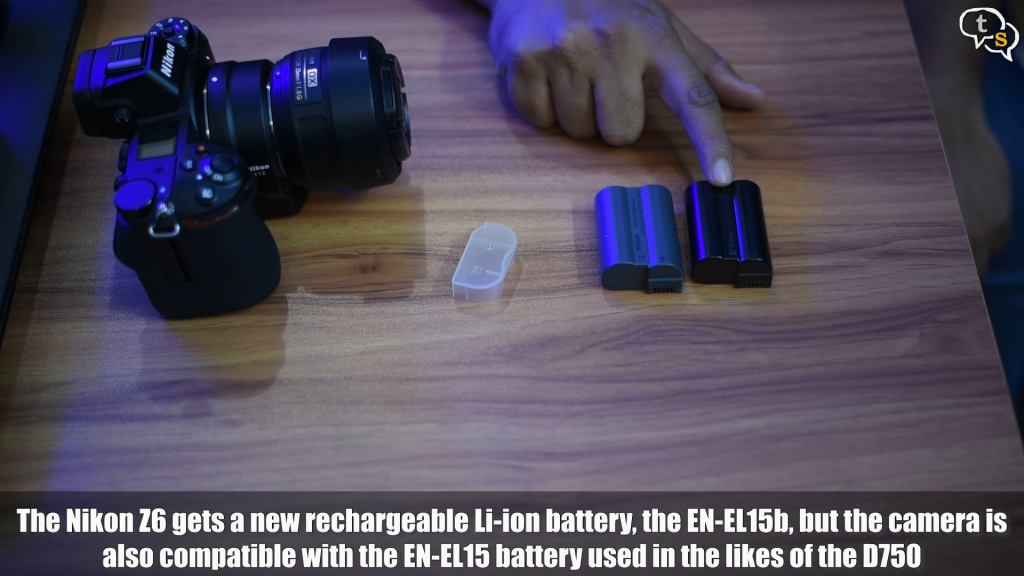
As you can see my older battery looks exactly the same as the newer one, except that it is black and the newer one is grey.
Slide the battery in and switch on. Oh, there’s nothing on the screen. Let’s use my older battery. Phew I was worried for a second, the new battery just didn’t have a charge. The older battery seems to be working well.
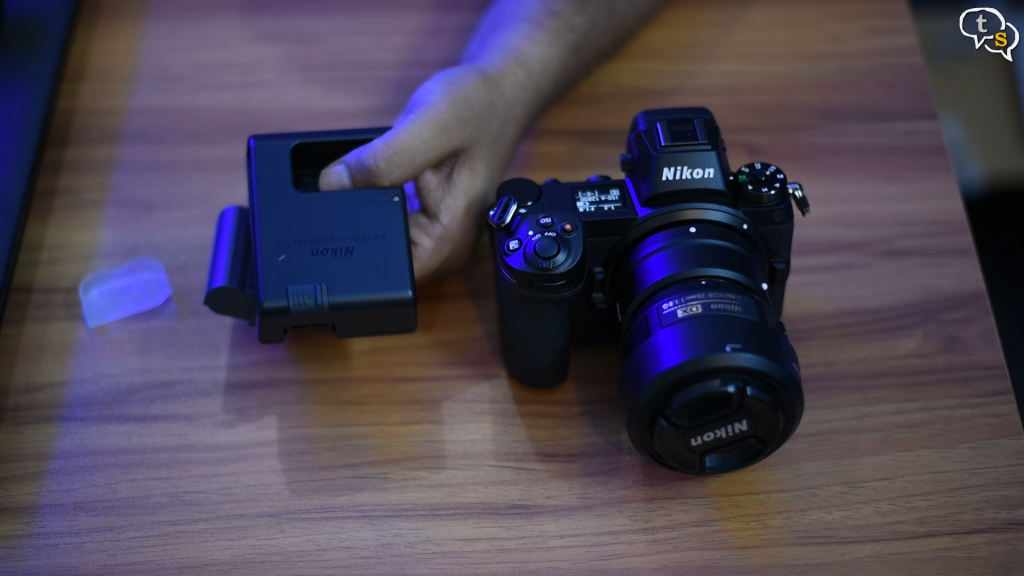
I’ll just place the new one to charge. Just slide in the battery into the charger, use the provided power cable and plug in.
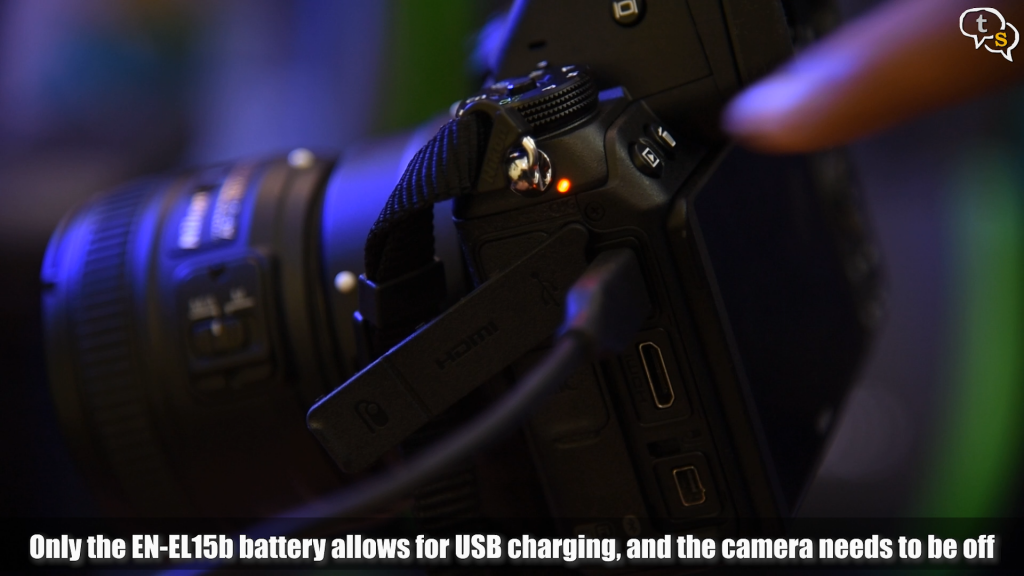
Only the En-EL15b battery allows for USB-C charging.
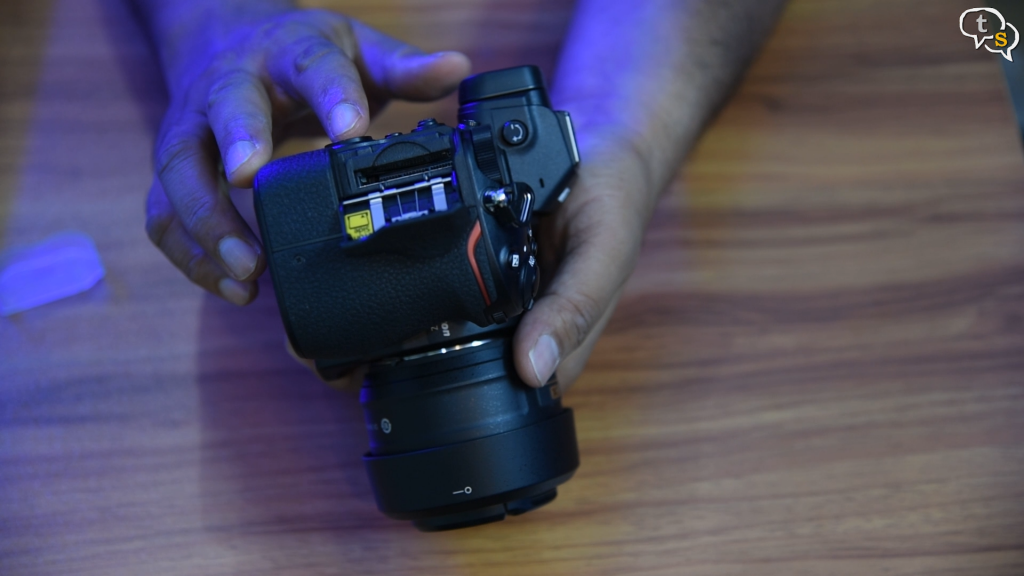
Back to the camera, we notice the sliding door on the side, which opens up revealing One card slot. This is supposed to be targeted at prosumers so not sure why they added only one slot.
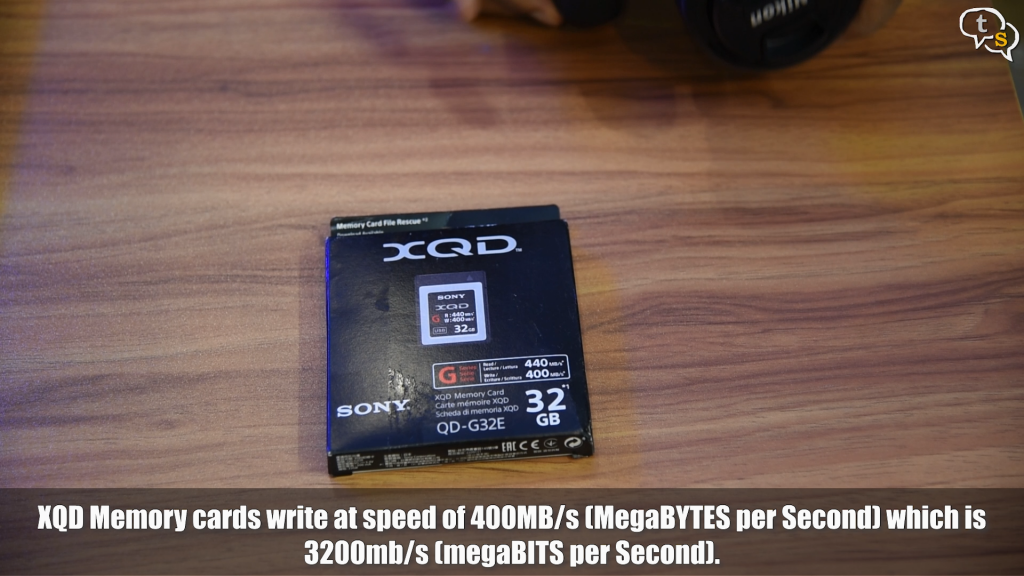
Nikon also adopted the newer XQD card standard, and these memory cards ‘are’ expensive. I have a 32 GB card as part of the kit. Not having more than one XQD card, this should be fine as of now. I’ll wait for the prices to come down before I purchase another.
XQD cards are a successor to the compact flash cards and have high read and write speeds.
This is necessary as newer cameras can shoot at 12 fps, so being able to empty the buffer into the card makes the camera ready to continue shooting.
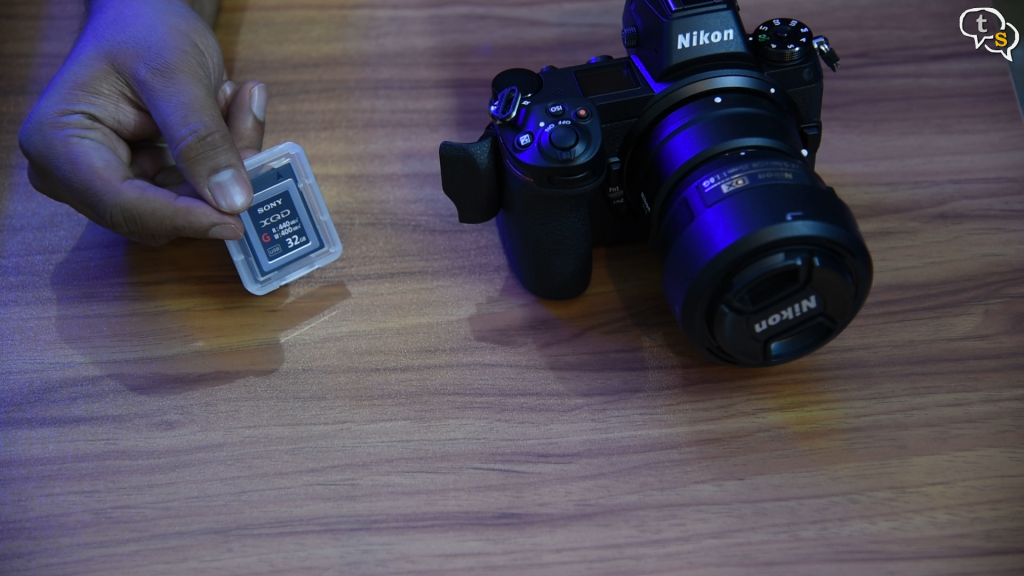
Also, with 4K videos becoming a standard on these cameras the high bandwidth allows for more data to be written. XQD cards are also more durable as compared to Sd-cards. Considering the size of the camera body it’s understandable why they couldn’t stuff in another slot.
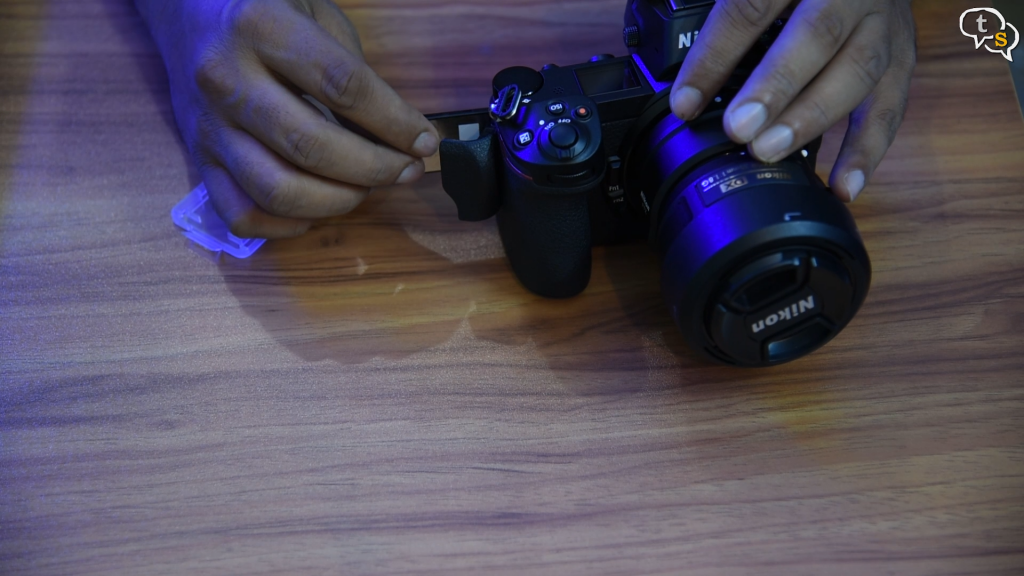
So here we go, just slide in the card into the slot, the label side towards yourself, close and done.
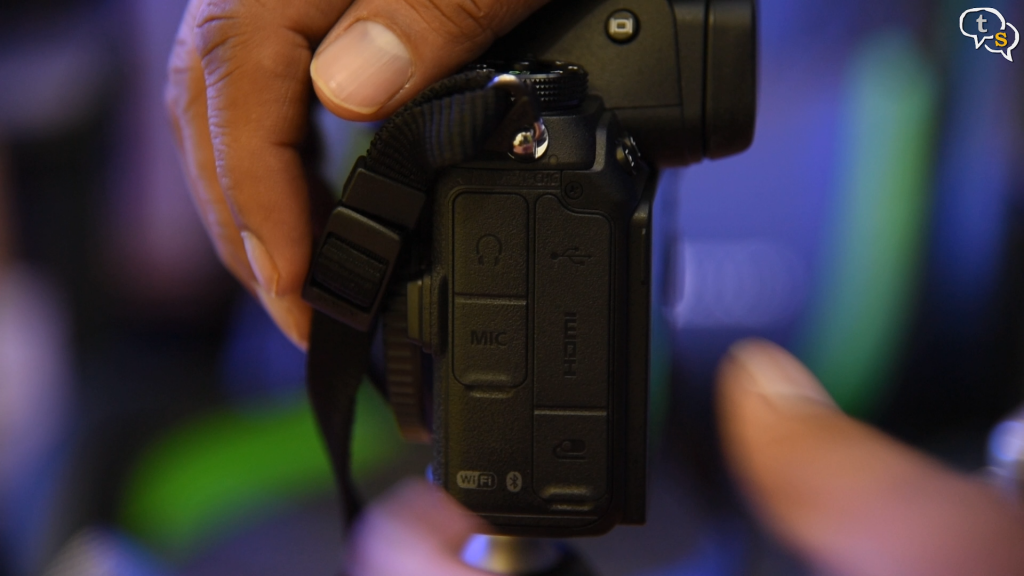
On the left we have flaps that cover the microphone input and headphone output ports, and another longer flap that covers the usb-c port, mini HDMI and the Nikon interface port.
Everything’s ready now, let’s check out the camera.
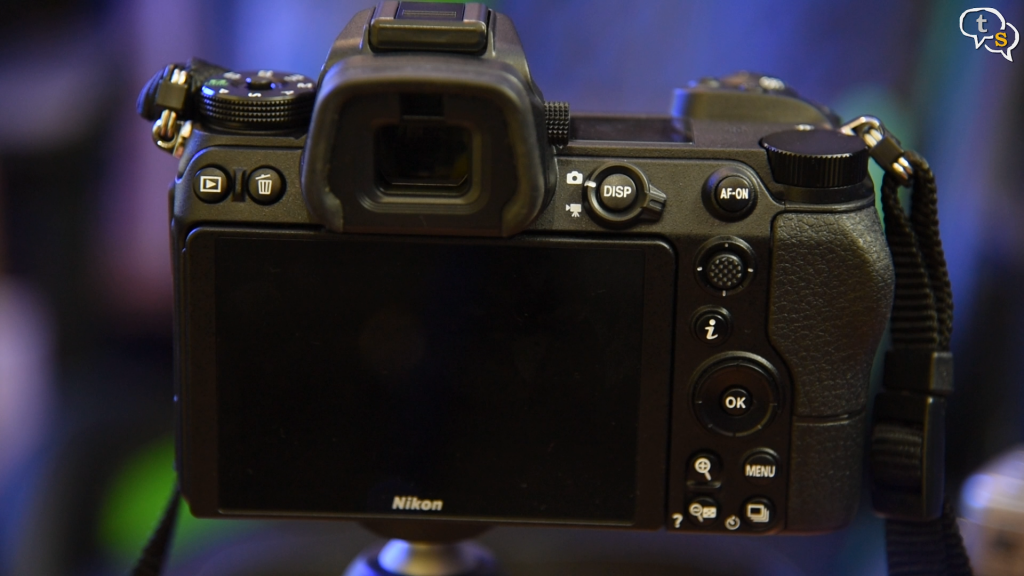
Most of the control buttons and dials are on the right side of the camera for easy access.
The joystick allows for navigating through the menu. On the left we have the play and delete buttons.
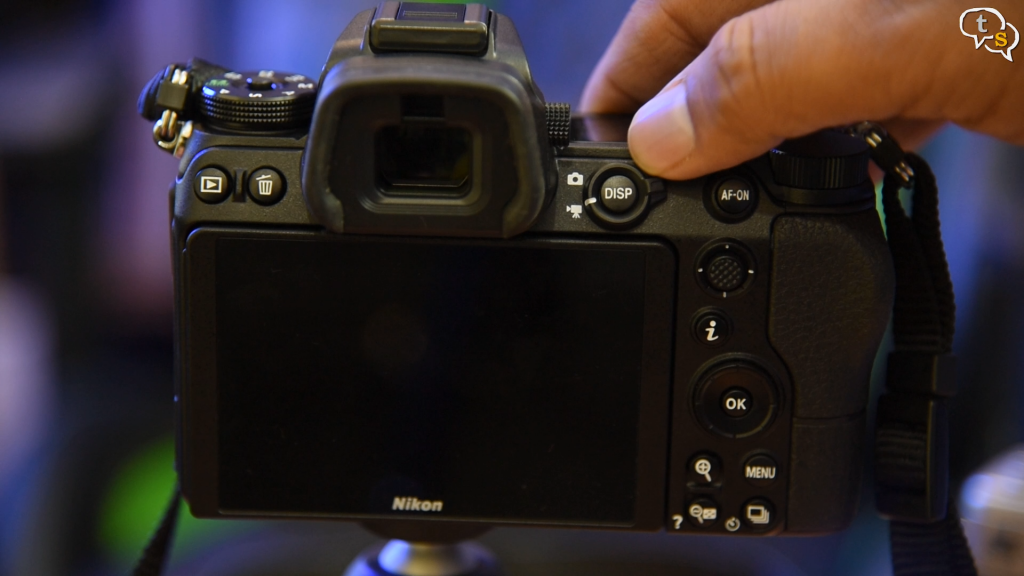
On the back we have the mode dial, to shift between photo and video mode.
Right next to it is the Autofocus on button.
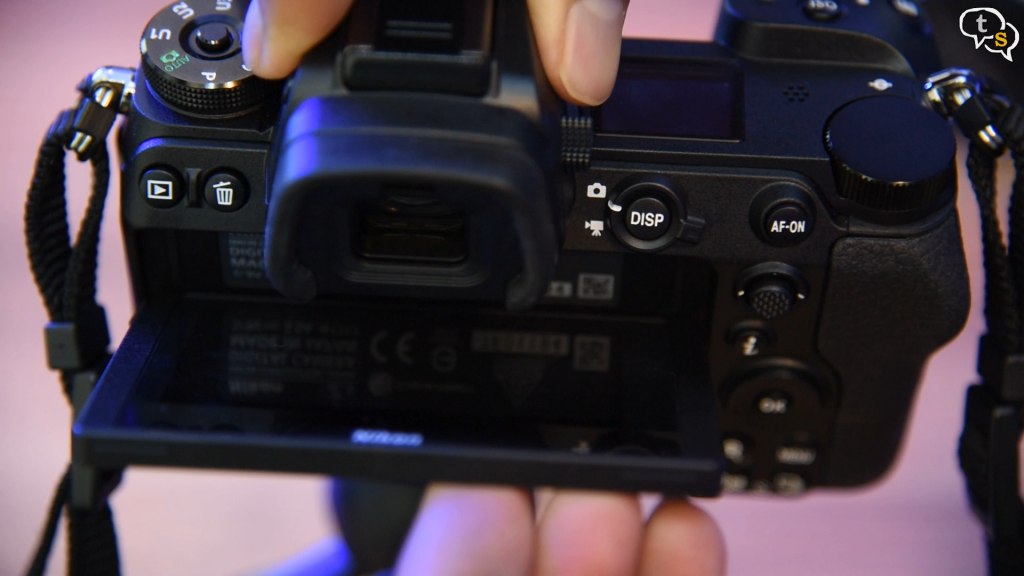
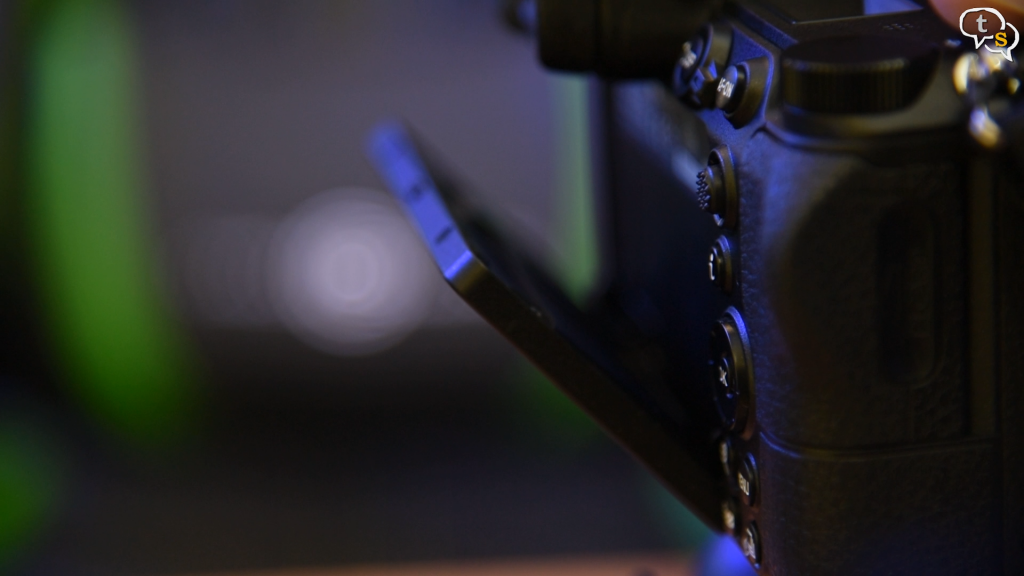
The LCD screen can tilt, 90 degrees upward, and down by 45 degrees. It is not a fully articulating screen so if you are trying to blog, you will not be able to see yourself on the screen. Not a deal breaker, but people who do shoot with the screen all the way out, this camera cannot. The screen is quite sharp with a 2.1 million dot panel.
If you’re a Nikon user, you will feel right at home.
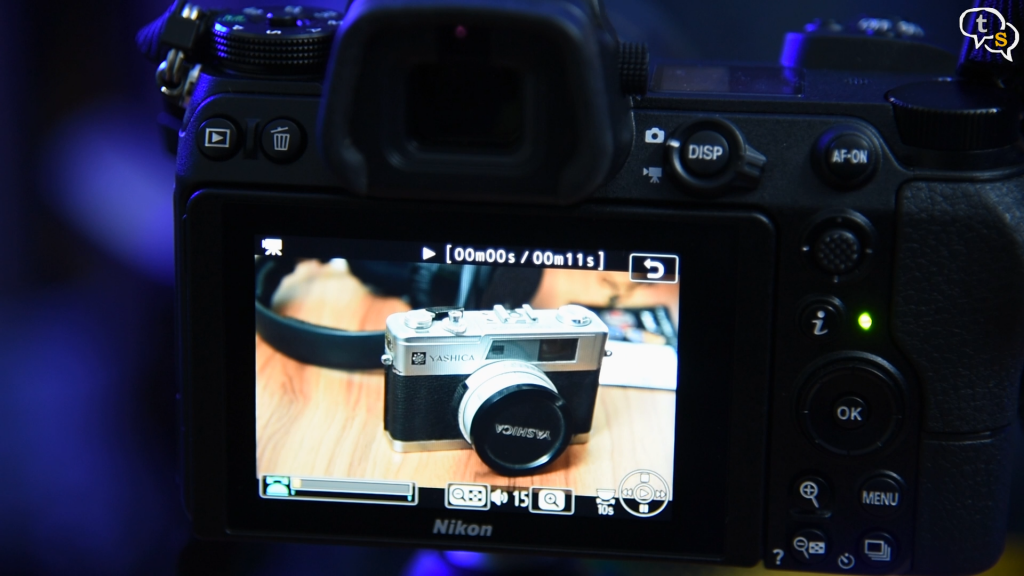
The display on the back is gorgeous and quite bright. Its 3.2 inches in size with 2,100k dots and is also a touchscreen.
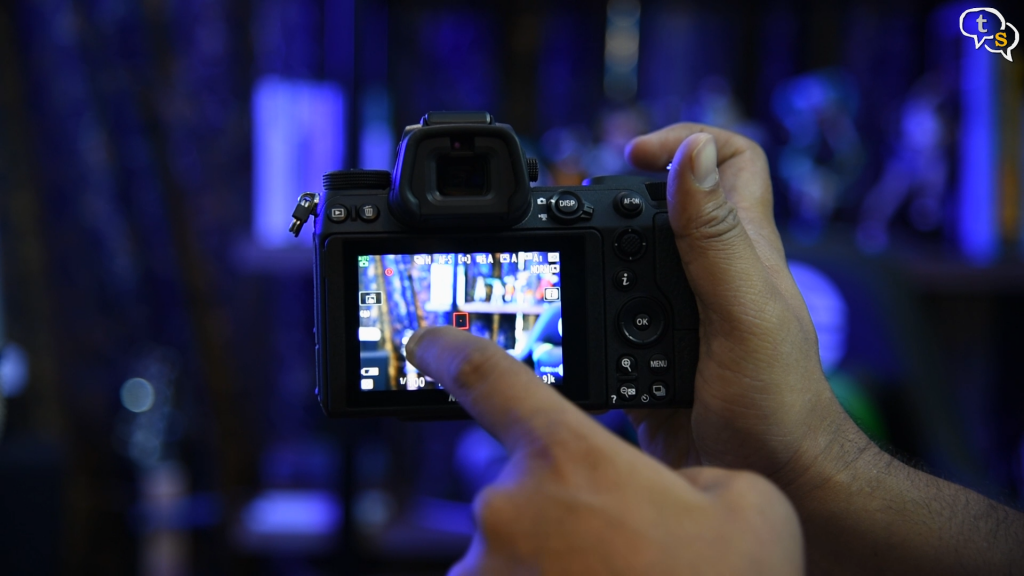
You can touch the screen to focus on any object, which is great as we don’t have to use the joystick to move the focus point around.
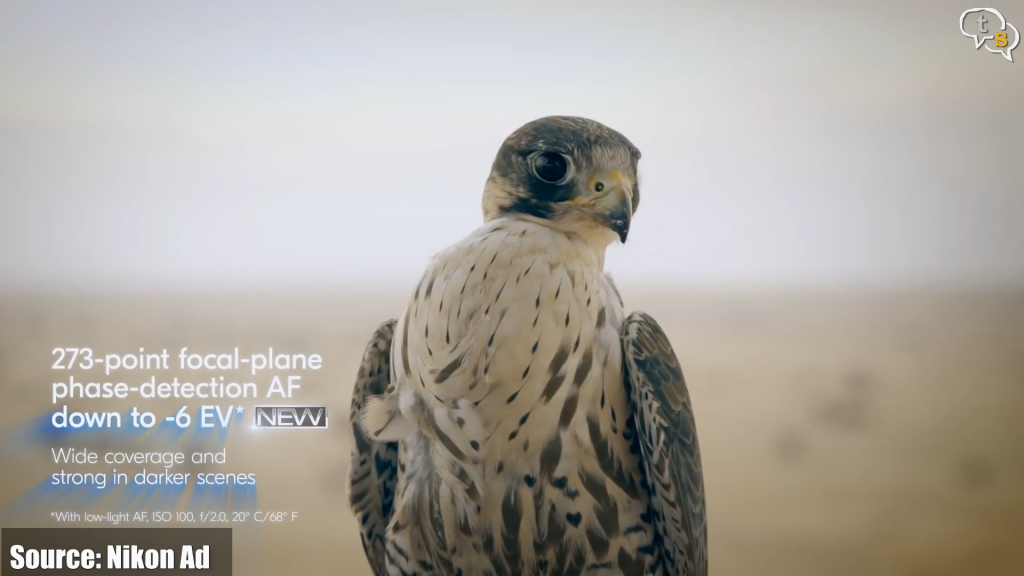
The Z6 has 273 Auto focus points that spread across most of the sensor, all the way from the top to bottom, and left to the right but with 1 focus point away on the left and right. The Z7 has 493 points.
The camera has an amazing continuous shooting mode, max at 12 fps for Jpeg and raw files at 12 bit, it slows down to 9 fps if you want to shoot at 14 bit, at the lower framerate the update on the viewfinder manages to keep up, else it lags a frame or two at 12 fps making it difficult to follow a moving target. There’s also an option for 3 fps and single shutter. The camera is rated for 200,000 shot shutter life.
The camera uses an Expeed 6 processor which is the latest offering from Nikon which is much more powerful than earlier generations and brings with it lots of new features.
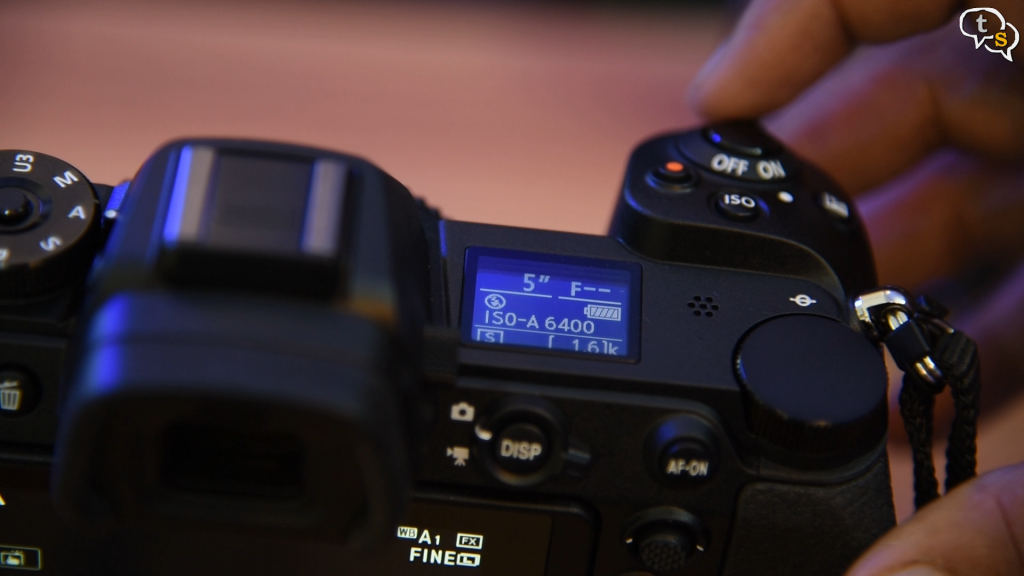
On the top we have a crisp grayscale display showing our current settings, battery levels, shutter mode etc.
We also have a dedicated ISO button, a record button for video, on of switch and an exposure compensation button.
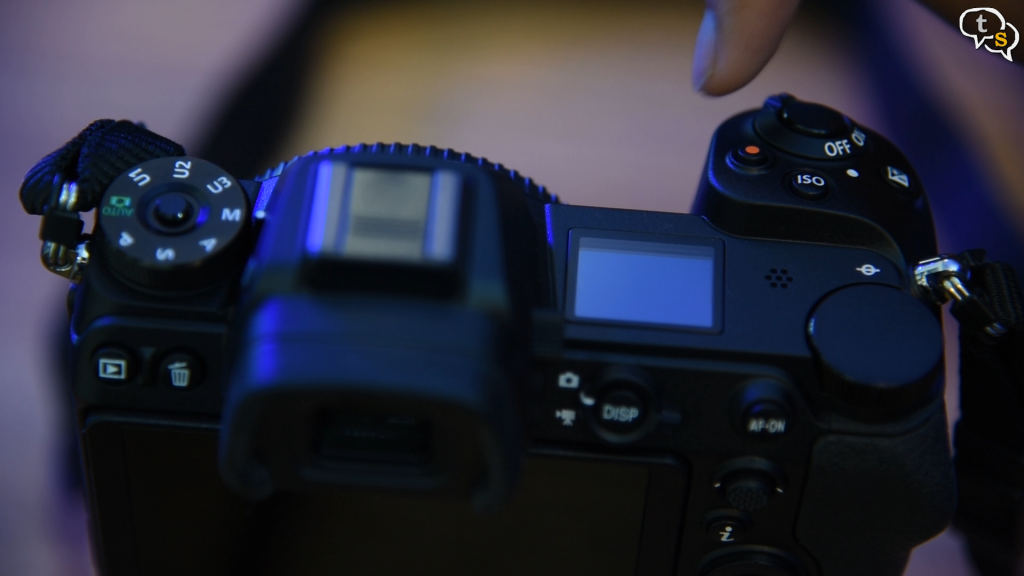
On the left we have a dial to change between shooting modes available on the camera.
Beside the lens we have two more customizable buttons, which can be set to any function you would require easy access to.
I upgraded to this camera for video, and in that it excels. It offers full frame uncropped 4K video, which is downsampled from 6K, thus providing the sharpest video. 10 bit 4:2:2 N-Log over
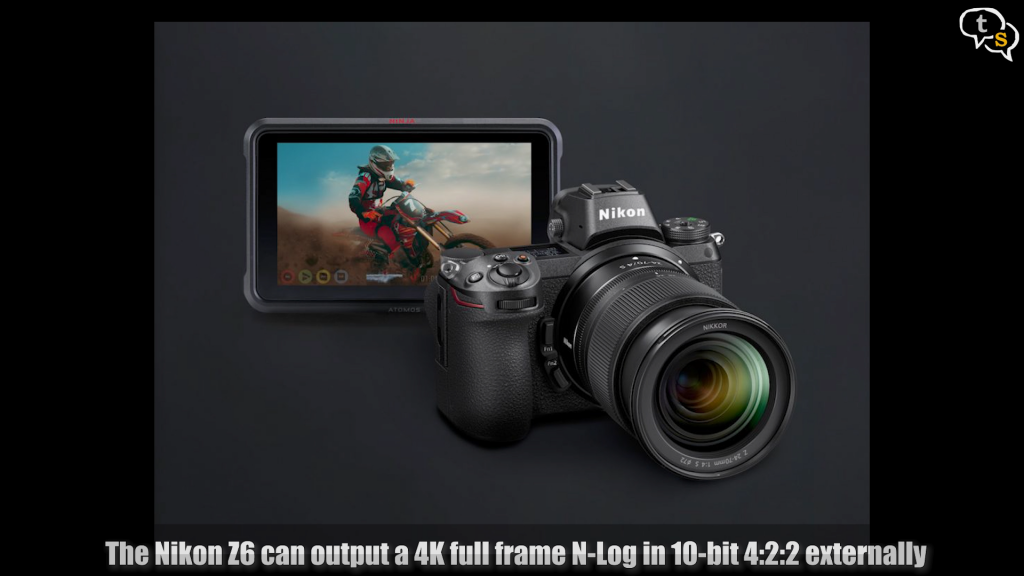
HDMI, but only if you use an external recorder such as the Atmos Ninja V, else you are limited to 100 Mbps 8bit internal recording.
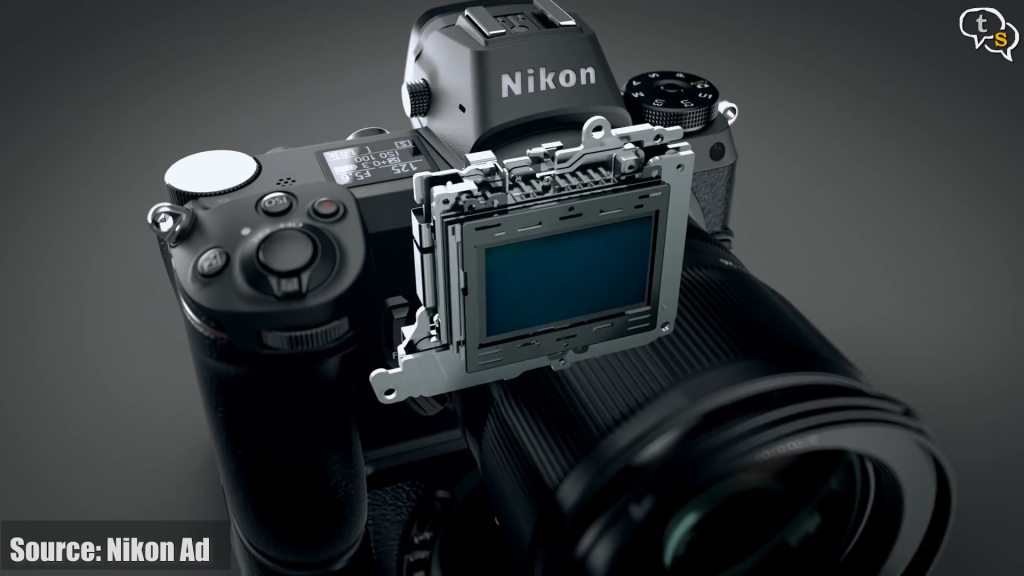
Stabilization on the Nikon Z6 is amazing with the 5 axis In body image stabilization or IBIS as it’s called, which can work with lenses that don’t have internal stabilization vibration reduction. But using non-native Z lenses the stabilization is down to 3 axis only.

The grip on this camera is quite good, quite similar to my D750 DSLR.
Not having purchased any Z mount lenses, I used my existing lenses with the FTZ adapter, and I found my Nikon lenses worked quite well.
The speed with which the camera responded is similar to how it was on the D750.
My Tamron lens felt a bit slow though, but it is a slow lens, and the focus takes a little longer, but with the Nikon lenses it worked without a hitch.
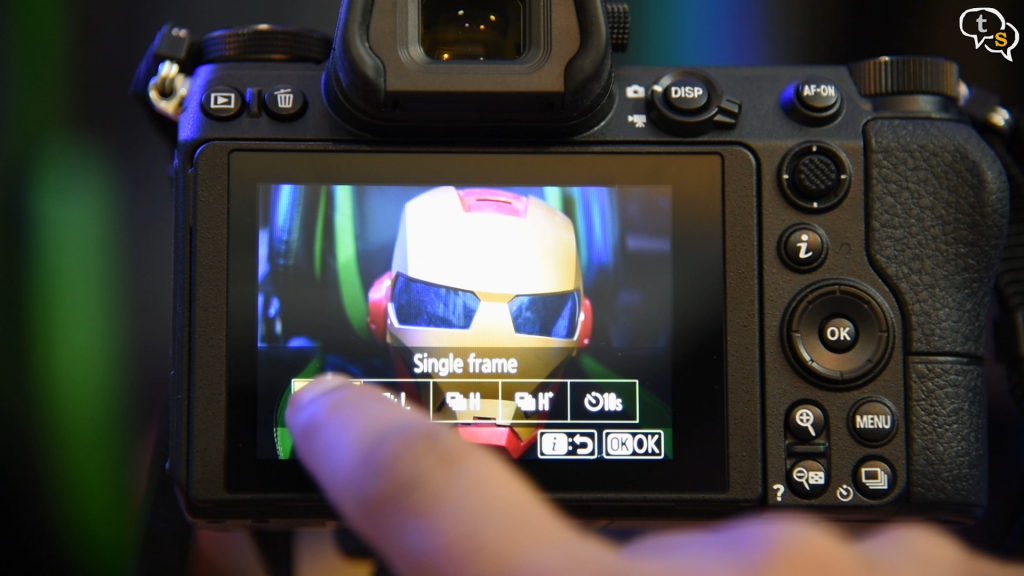
The touchscreen is used to change most of the settings. A customizable menu is available when you press the ‘i’ key. Once the menu is open, we can directly tap the screen to change the settings or use the d-pad.
Coming to the price,
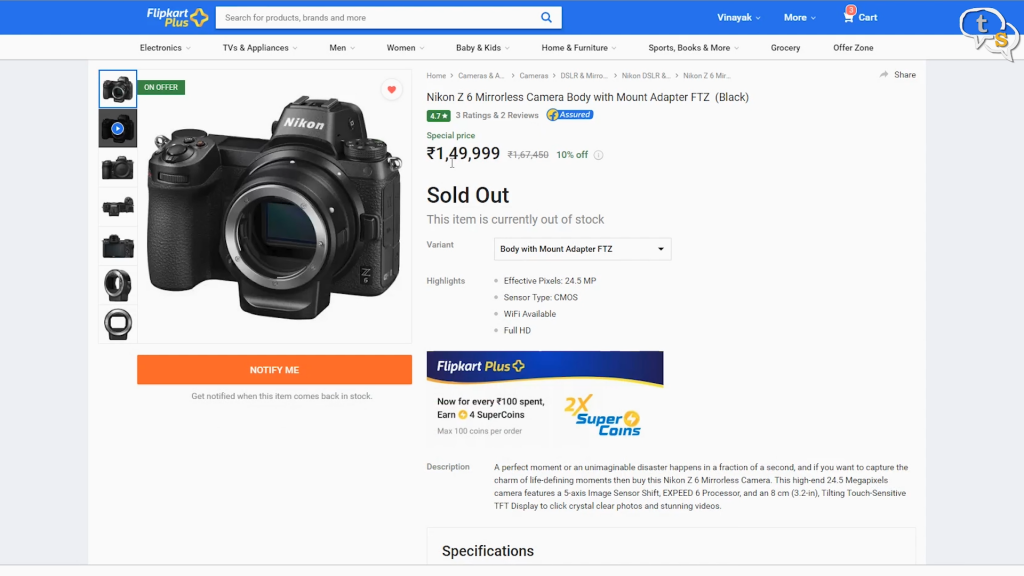
The ‘body only’ costs around 1.65 lakhs, but i did find it at 1.49 lakhs on Flipkart as a kit. With a 24-70mm lens the price goes up to 1.85 lakhs.
Specifications at a glance:
- 24.5MP full-frame BSI-CMOS sensor
- Expeed 6 processor
- Hybrid autofocus system w/273 phase-detect points
- Up to 12 fps burst shooting (Raw + JPEG)
- 3.69M-dot OLED viewfinder which is a super high res Electronic viewfinder
- 2.1M-dot tilting touch LCD
- OLED top plate display
- Single XQD card slot
- UHD 4K capture up to 30p
- 10-bit 4:2:2 N-Log output over HDMI
- Up to 100Mbps H.264 8-bit internal video capture
- SnapBridge Wi-Fi system with Bluetooth
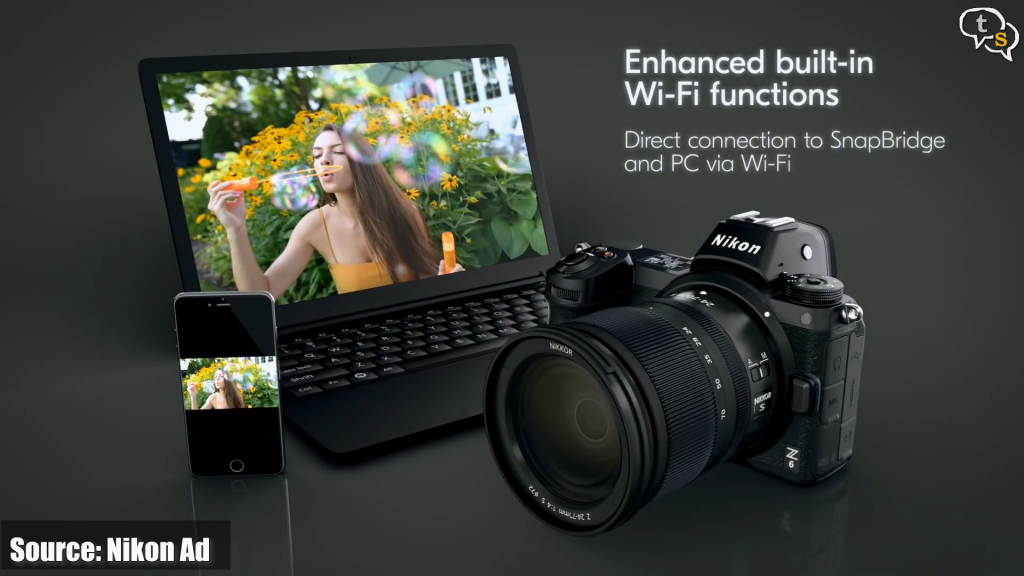
The Snapbridge app is something I really like, it makes copying photos and videos off the camera a ‘snap’.
So that was the unboxing of the Nikon Z6 mirrorless camera, if you have any questions do write to us at tech@talkingstuff.net or WhatsApp us at 96525 78833.
Nikon might be late to the party, but their mirrorless offering is worthy taking note of.
That’s it from me do check out our YouTube channel at www.youtube.com/talkingstuffnet


